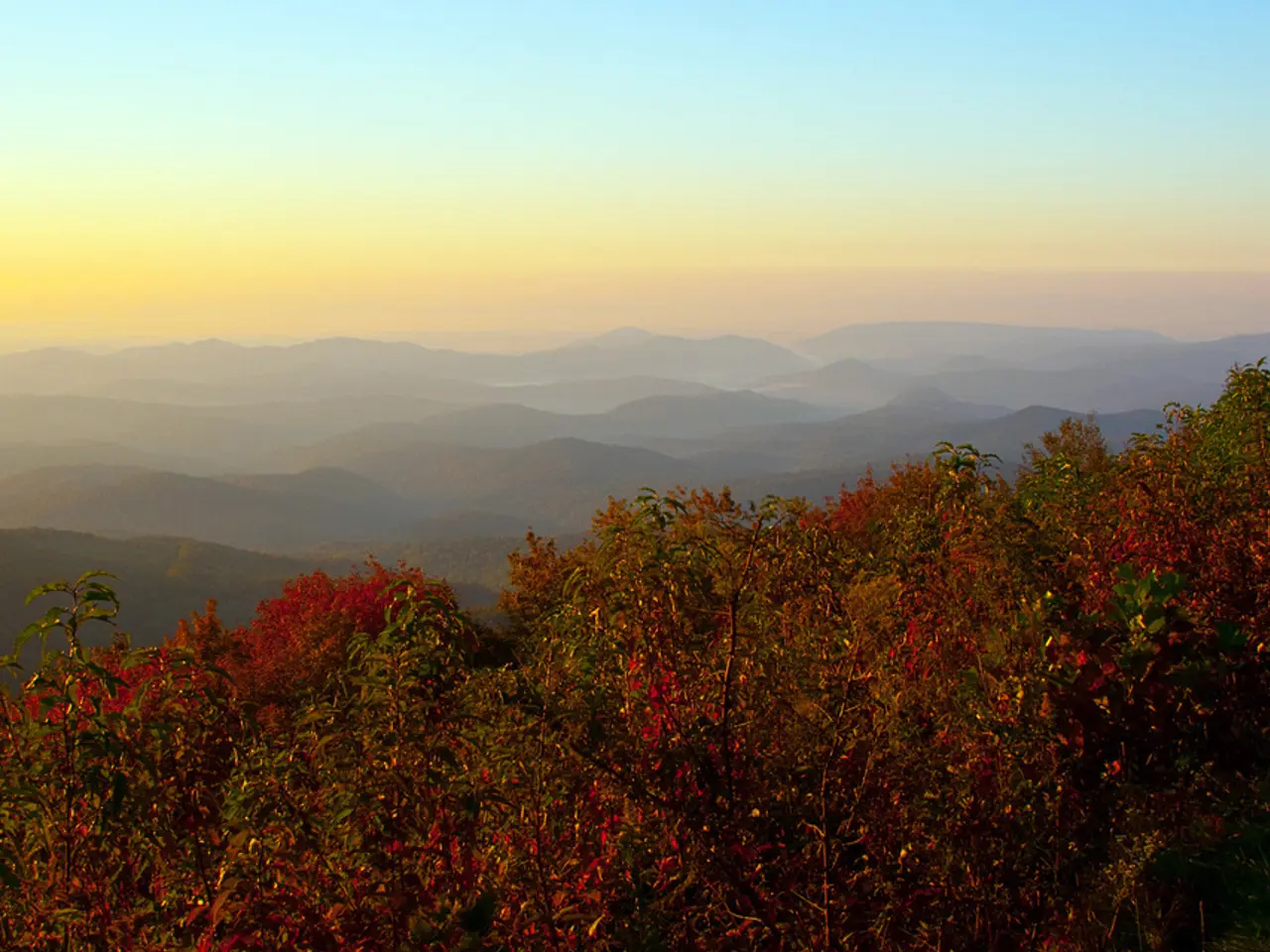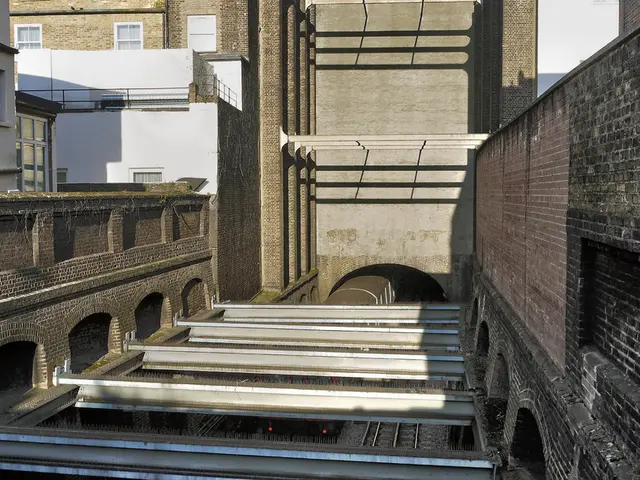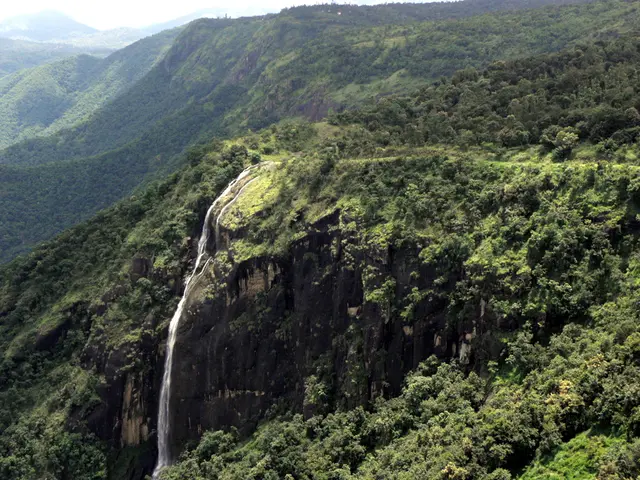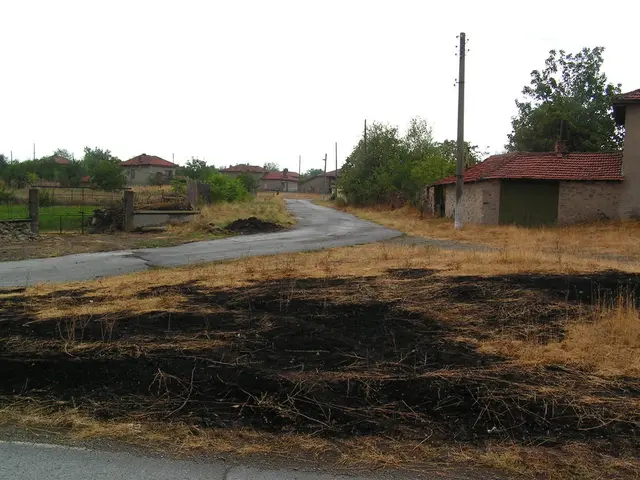Explore Lassen Volcanic National Park: Nature's Mesmerizing Volcanic Wonderland Awaits!
**Exploring Lassen Volcanic National Park: A Journey Through California's Active Volcanic Landscape**
Lassen Volcanic National Park, nestled in the northern part of California, is a testament to the dynamic forces that shape our planet. Originally established as two separate national monuments in 1907 - Lassen Peak and Cinder Cone - the area was expanded and redesignated as a national park in 1916 following a series of eruptions from Lassen Peak [1][3].
This compact laboratory of volcanic phenomena and associated thermal features, excluding true geysers, offers a unique insight into the world of active volcanism [2]. The park's diverse landscapes, ranging from volcanic peaks and lava flows to hydrothermal sites like Bumpass Hell, showcase the various stages of volcanic activity [3].
The park's significance extends beyond its volcanic features. Its unique volcanic environment supports a variety of flora and fauna, making it a valuable area for scientific study and conservation [4]. The area has a rich cultural history, having been a meeting place for several Native American tribes, including the Maidu, Yana, Yahi, and Atsugewi peoples, and an important site for settlers and explorers [3].
Accessing Lassen Volcanic National Park is best done by private automobile, with auto rental services available in nearby cities such as Redding, Red Bluff, Chico, Susanville, or Reno [2]. The park's infrastructure, including the Main Park Road, has been developed to facilitate access to these natural wonders while preserving the delicate ecological balance of the area [1].
The park spans approximately 150 square miles, or over 106,000 acres, and boasts some 779 plant species, with nearby Mount Shasta having only 485 species [2]. The park's plant life is a unique mix of species from the Sierra Nevada to the south and the Cascade Range, resulting in a relative abundance of species.
The park is part of a vast geographic unit - a great lava plateau with isolated volcanic peaks - that also encompasses Lava Beds National Monument, California, and Crater Lake National Park, Oregon. The reawakening of Lassen Peak began as a vent on a large extinct volcano known as Tehama, profoundly altering the surrounding landscape.
One of the park's most notable events occurred in 1915, when Lassen Peak blew an enormous mushroom cloud some 7 miles into the stratosphere [1]. Today, Hat Lake, located within the park, is undergoing succession and will soon disappear, leaving a meadow that will one day give way to forests.
Despite its remote location, Lassen Volcanic National Park remains one of California's lesser-visited national parks, offering a tranquil and unique experience for those interested in volcanic landscapes and natural history [4]. The park's infrastructure, including the Main Park Road, was developed to facilitate access to these natural wonders while preserving the delicate ecological balance of the area [1].
Visitors to the park can enjoy some 150 miles of hiking trails, including 17 miles of the Pacific Crest Trails, which vary in length and difficulty, winding through coniferous forest, alpine tundra, and along waterways [2]. The park is open year-round, however, access is difficult in winter and spring. The best time of the year to visit the park for hiking and car touring is August and September, while the best time for cross-country skiing and snowshoeing is January, February, and March [2].
The closest major airport to Lassen Volcanic National Park is Reno, NV. Smaller airports are available at Redding and Chico, CA. Whether you're an avid hiker, a nature enthusiast, or a history buff, Lassen Volcanic National Park offers a unique and unforgettable experience for all.
References: [1] National Park Service. (n.d.). Lassen Volcanic National Park. Retrieved September 2022, from
- The camper rented an automobile in Red Bluff, California, for easy access to Lassen Volcanic National Park.
- The park, spanning over 106,000 acres, houses approximately 779 unique plant species, a botanical treasure trove.
- Lassen Volcanic National Park is a geological marvel, part of a vast lava plateau that encompasses other parks like Lava Beds National Monument and Crater Lake National Park.
- The park's diverse landscapes, from volcanic peaks to hydrothermal sites like Bumpass Hell, showcase the history of volcanic activity in the region.
- Besides its volcanic features, the park is rich in wildlife, offering opportunities for scientific study and conservation.
- The park is an important historical site, having been a meeting place for Native American tribes like the Maidu, Yana, Yahi, and Atsugewi.
- One can immerse in the natural surroundings by camping under the starlit sky or exploring the trails that weave through the forests and along the lakes.
- The park's hiking trails offer a variety of lengths and difficulties, providing a unique adventure for all levels of hikers.
- The park's infrastructure, including the Main Park Road, has been developed thoughtfully to preserve the delicate ecological balance while allowing visitors to access the natural wonders.
- The best time to visit the park for hiking, car touring, and appreciating the vibrant landscape is from August to September, while winter and spring present challenging, but equally beautiful, conditions.
- Whether you're a traveler wanting to explore the diverse landscapes, a history buff seeking to learn about the park's Indigenous history, or a nature enthusiast interested in the park's geology and wildlife, Lassen Volcanic National Park promises an unforgettable experience.




